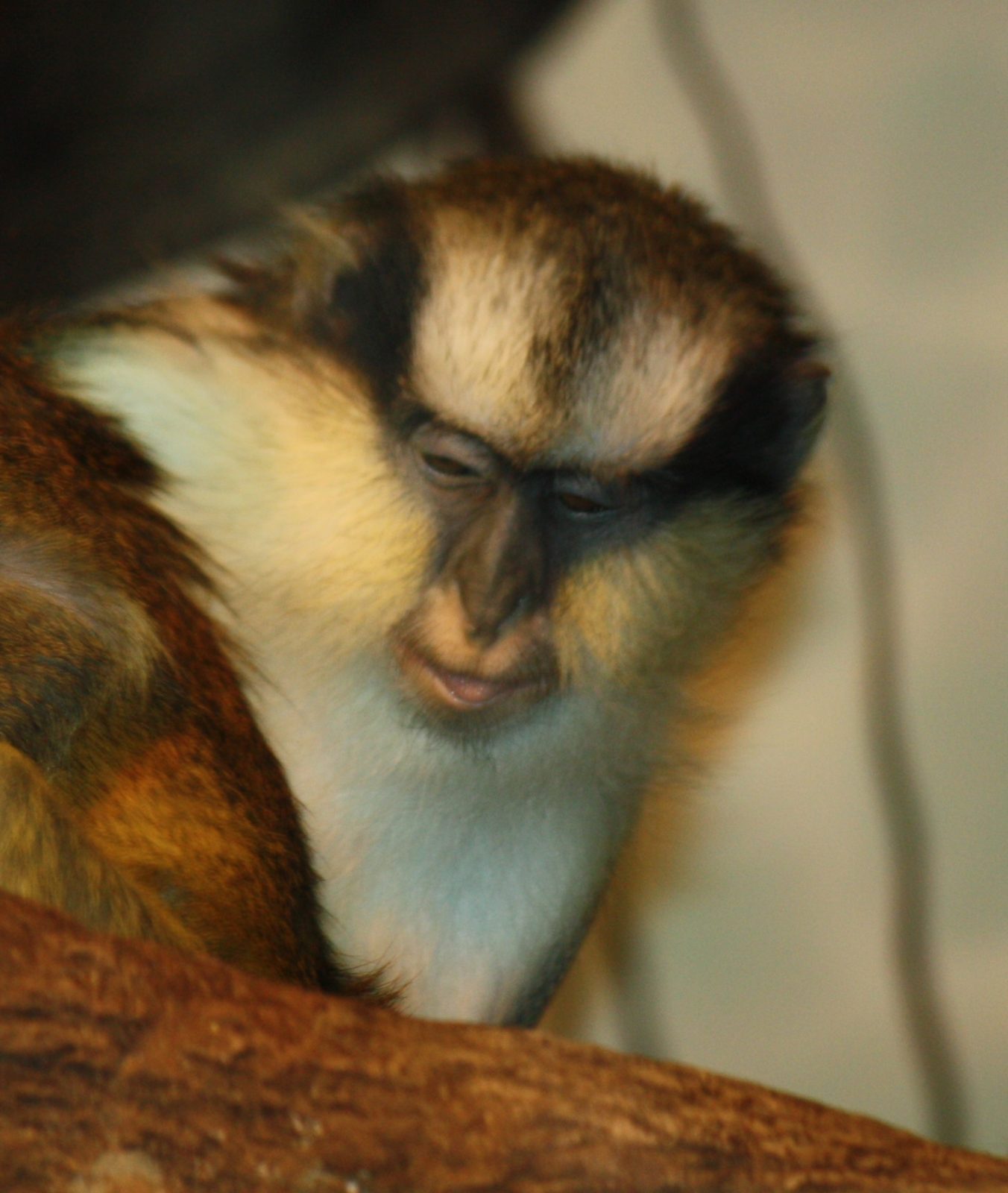
Crested Mona Monkey
The crested Mona monkey does get referred to on a variety of other names such as crowned guenon, crowned monkey, golden-bellied guenon, or golden-bellied monkey is a species of African primate in the family Cercopithecidae found in west central Africa. Found in western central Africa from the in Nigeria and southern south to Angola, including Bioko Island, and east into the Central African Republic eastern Congo and the northern Democratic Republic of Congo
The Crested mona monkey occurs in mature lowland rainforest, in both primary and secondary forest, where there is a well developed canopy and with a clear understorey. Will also occur in flooded forest but avoids small forest patches, gallery forests and open secondary forest with a dense understorey.
The crested mona monkey is a species which uses its voice a great deal. Both males and females have vocal sacs which make their calls louder. A typical call is the booming call made by the adult male which can be heard more than 200m away. Social interactions include tail twining between resting monkeys and a ritualised head display.
The crested mona monkey is an agile species jumping between trees. Normally found in groups between 12 and 20 individuals. This consists of a male, a group of females and their dependent offspring. Groups are highly vocal, with the males producing the loud, “boom” mentioned above announcing their presence and status, there is also a sharp hacking call which is used as an alarm. The dominant males are able to establish groups, and therefore the lives of most males are rather solitary and are marked by an absence of social contact.
Surprisingly, many solitary males respond by joining groups of other monkeys such as the black colobus Colobus, where these solitary males can form strong group bonds with the non conspecific monkeys, possibly resulting in a permanent loss of mating opportunities. The social groups of crested mona monkeys will also associate with other guenon species, especially with moustached guenon and greater spot-nosed monkey. In the Atlantic coastal forests, this includes red-capped mangabey as well. These large mixed-species groups grant the monkeys’ increased protection from predation, as the greater number of eyes on the sky means that the spotting of predators such as birds of prey is more likely, and it also facilitates the sharing of information between groups about the best foraging sites.
The crested mona monkey is mainly frugivorous but invertebrates are also regularly eaten, along with small quantities of leaves. Unlike most guenons, populations of the crested mona monkey in the northern parts of its range are known to migrate over long distances to forage for seasonally abundant food supplies.
The crested mona monkey has a polygynous mating system where the dominant male in each group has exclusive breeding access to all the females in that group. Breeding seem to take place at any time of year, and the females give birth to a single baby after a pregnancy of roughly five months.
There does not seem to be a consensus around how many subspecies of the crested mona monkey are recognised and some which were formerly considered subspecies of this species are now regarded as species in their own right, including Wolf’s mona monkey and Dent’s mona monkey . Three subspecies appear to be the most widely accepted number
The subspecies and their ranges are:
- Gray’s crested mona: Sangha River basin of southern Cameroon, southern Central African Republic through to the northern Democratic republic and Cabinda.
- Black-footed crested mona: Endemic to Gabon and southwestern Republic of Congo.
- Golden-bellied crested mona: Bioko and the adjacent parts of southern Nigeria, southern Cameroon.
The subspecies schwarzianus is not now generally recognised.
Should this species get written about on this website, any articles will be listed below.
Below the video (unfortunately only a captive member of this species) we will list any contacts to help you see this species in the wild.
